There are about 20 species of penguins in the world, all of which are distributed in the southern hemisphere, centered on the Antarctic continent and extending as far north as the southern tip of Africa, South America and Oceania. They are mainly distributed along the coast of the continent and on some islands. There are 7 species of Antarctic penguins: emperor penguins, Adélie penguins, gentoo penguins (also known as gentoo penguins), chinstrap penguins (also known as Antarctic penguins), king penguins (also known as king penguins), stone-loving penguins and flashy penguins. These seven penguin species all breed in the Antarctic Convergence Zone.
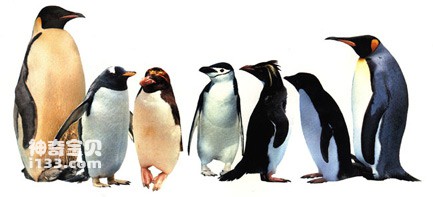
Penguins outside the Antarctic region include Island-ringed penguins, Hong's ringed penguins, Macron's ringed penguins, spotted-billed ringed penguins, thick-beaked penguins, erect-crested penguins, yellow-eyed penguins, white-winged flipper penguins, and little flipper penguins. 10 There are many species, belonging to temperate and subtropical species. Their individuals are smaller than Antarctic penguins, and some have white spots on their backs.
The common morphological characteristics of Antarctic penguins are that their bodies are streamlined, with black feathers on their backs and white feathers on their abdomens. Their wings are vestigial and fin-shaped. Their feathers are thin tube-like structures arranged in a lanceolate shape. They have short feet and thin legs and webbed toes. The tail is short, the body is fat, the belly is big, and the walking is staggering. Different species of penguins have distinct characteristics and are easy to identify. The main characteristics of the seven species of penguins in Antarctica are as follows.

1. Emperor Penguin
The emperor penguin, also known as the emperor penguin for short, is generally 1.22 meters tall and weighs 41 kilograms. It is the largest penguin in Antarctica and the king of penguins in the world. Its morphological characteristic is an orange-yellow feather under the neck, which gradually becomes lighter downwards, and is the deepest behind the ears. The whole body is harmonious in color, solemn and elegant. Emperor penguins breed on the ice in the cold Antarctic winter. The female penguin lays one egg at a time and the male penguin incubates the egg.
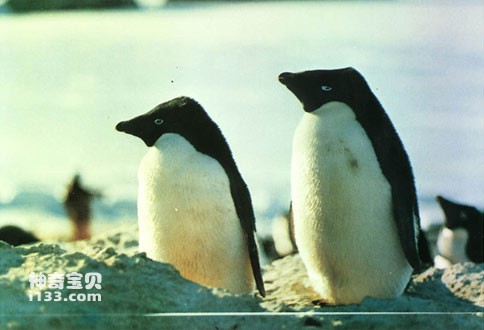
2. Adélie penguin
It is 45 to 55 centimeters tall, weighs 4.5 kilograms, has white eye circles, a blue-green head, a black beak, slender feathers at the corners of the mouth, short legs, and black claws. The name of the Adélie penguin comes from the Adélie Land on the Antarctic continent, which was named by French explorer Di Dilville in 1840 after his wife. Adélie penguins are the most widely distributed and abundant penguins. The breeding season is in summer. The female penguin lays two eggs at a time. The female penguin incubates the eggs. The incubation period lasts for two months. Usually only one little penguin survives. The little penguin can swim in the water when it is 2 months old.
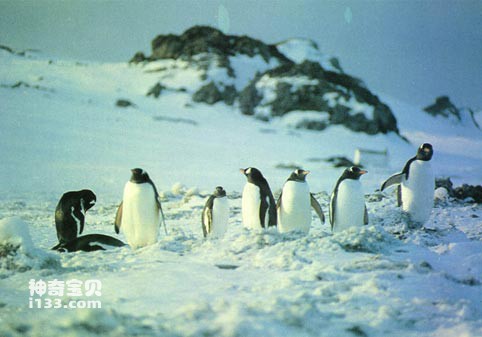
3. Golden Penguin
Height 56~66cm, weight 5.5kg. In recent years, two subspecies have been discovered, namely the northern species and the southern species, with slight differences in height, weight and shape. The golden penguin has a slender mouth, red corners, and a red triangle at the corner of the eye, making it appear graceful and elegant. Female penguins lay eggs in the Antarctic winter, 2 eggs at a time. Male and female penguins take turns incubating the eggs, first male and then female, changing shifts every 1 to 3 days. The incubation period is long, lasting seven or eight months, and the young penguins develop slowly and can only enter the water after three months.
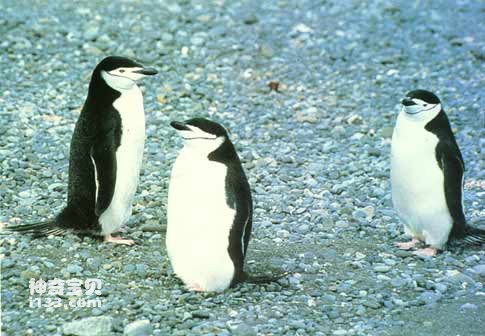
4. Chinstrap Penguin
He is 43 to 53 centimeters tall and weighs 4 kilograms. The most obvious feature is a black stripe under his neck, which looks like a naval officer's hatband, looking mighty and resolute. The Soviets called them "Police Officer Penguins". The reproductive season is in winter. The female penguin lays 2 eggs at a time. The male and female penguins take turns incubating the eggs, first the female and then the male. The female penguin incubates for 10 days first, and then every two or three days, the male and female penguins take turns. After a shift, the chicks can swim in the water after 2 months.
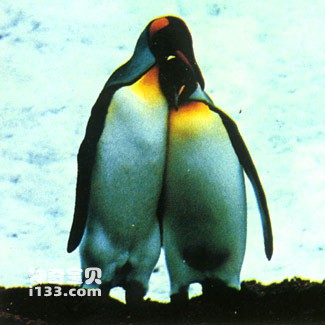
5. King Penguin
It is about 90 centimeters tall and weighs 12 kilograms. Its body size is second only to the emperor penguin. It is of the same genus and different species as the Emperor Penguin, with basically similar shapes. The main differences are its slender body, slender beak, bright red feathers under the neck, and a larger area extending downward and backward. It is the most colorful penguin. kind.
6. Rock-loving penguin
With a height of 44 to 49 centimeters and a weight of 2.5 kilograms, it is the smallest species of Antarctic penguins. It likes to be active on hillsides, highlands and beaches covered with rocks and pebbles. It seems that holding, pecking and playing with rocks are its instincts and habits, and building nests with rocks is its specialty. The rock-loving penguin is a type of crested penguin.
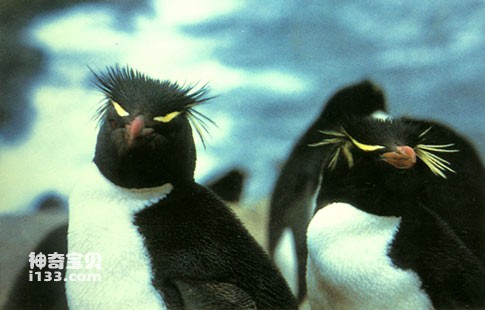
7. Flashy Penguin
It is 45 to 55 centimeters tall and weighs 4.6 kilograms. Its distinctive feature is that there are two clusters of golden feathers on the head above the eyes, a thick and short beak, which is Chu Shi color, and the eyeballs are orange. It is the most luxurious among penguins. He looks like a military commander in an ancient drama: he is wearing a black open-necked trench coat, a white battle uniform underneath, a golden rooster feather on his head, and a posture of leaping on a horse with a sword. The flashy penguin is also a type of crested penguin.
There are not many species of Antarctic penguins, but their numbers are considerable. According to long-term observations and estimates by ornithologists, there are nearly 120 million penguins in the Antarctic region, accounting for 87% of the world's total penguins and 90% of the Antarctic seabirds. The most numerous are Adélie penguins, with about 50 million, followed by chinstrap penguins, with about 3 million, and the smallest are emperor penguins, with about 570,000.
animal tags: penguin
We created this article in conjunction with AI technology, then made sure it was fact-checked and edited by a Animals Top editor.